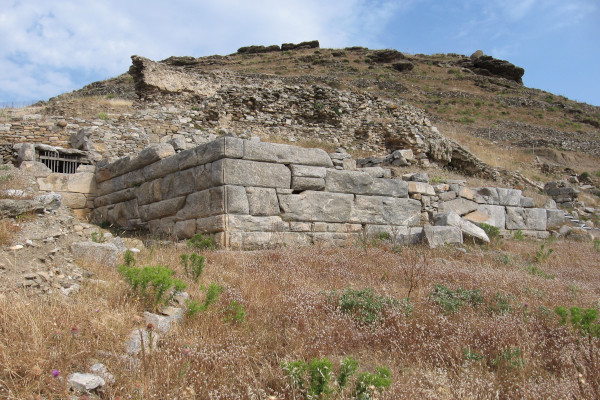On the hill above the port of Katapola, are situated the ruins of ancient Minoa, one of the three ancient cities of Amorgos, where according to the tradition, was the summer palace of Minos the king of Crete.
The ruins of ancient Minoa came to light in 1837 after the excavations of Ludwig Ross. The excavations carried out by the French Archaeological School in 1888. They revealed the best-preserved buildings and inscriptions (most of which are kept today in the Archaeological Museum of Syros), while more systematic excavations began in 1981 by the Athens Archaeological Society, where new information about the city was added.
Today are available, parts of the city wall, the gymnasium, the stadium, and the temple of Dionysus. At the same site, they were found traces of human presence dating back to 4000 BC, a first Cycladic era cemetery, and a vaulted Mycenaean tomb. The archaeological site is open and visitable, while it offers an amazing view of the Little Cyclades and a beautiful sunset.
